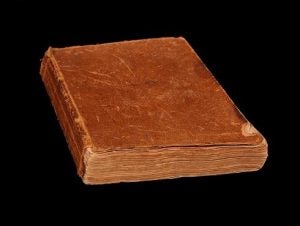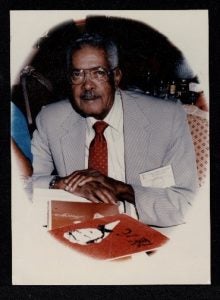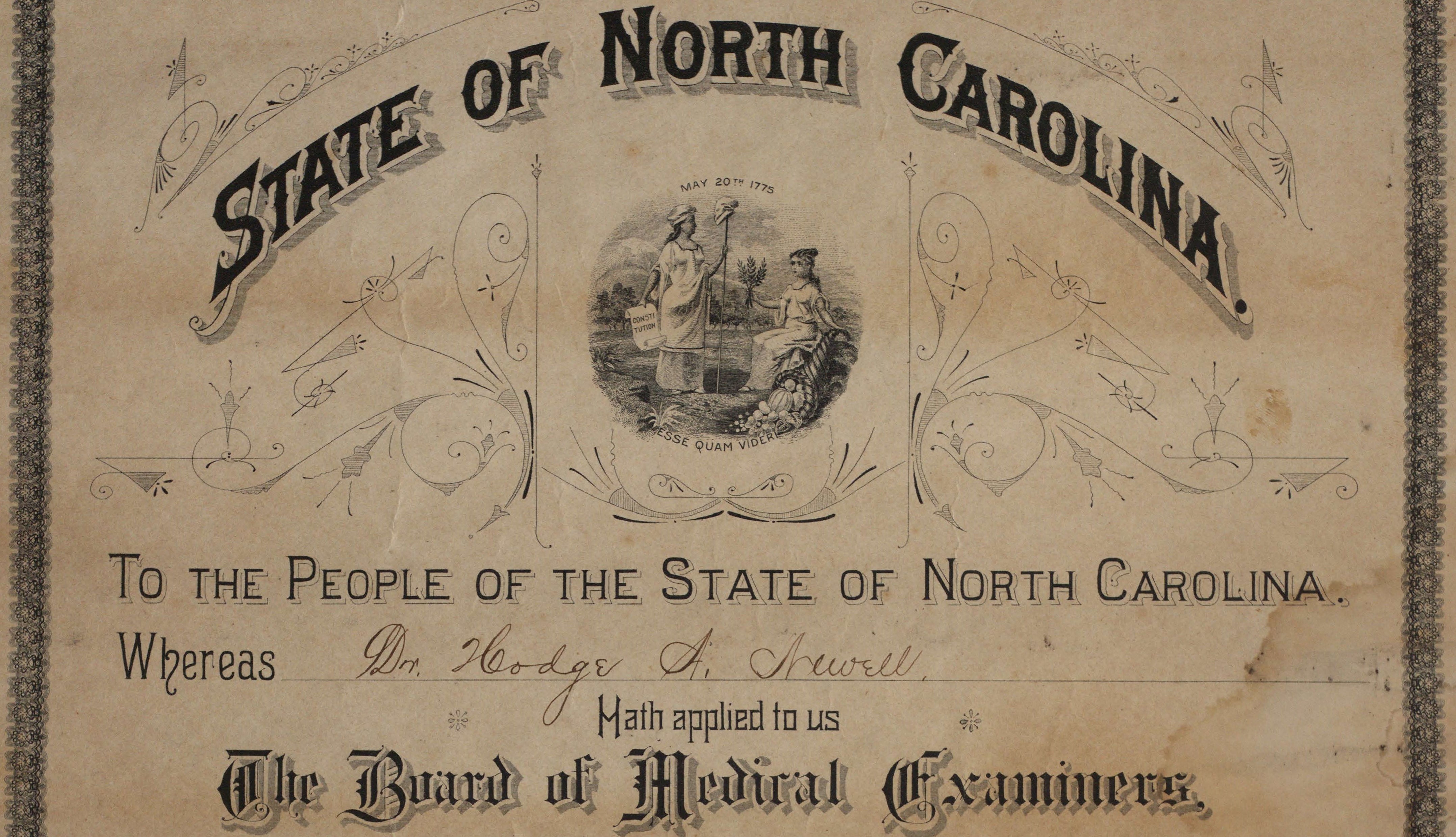Models of Care: Stories of Eastern North Carolina Physicians and Nurses from The Country Doctor Museum’s Collections
An exhibit currently on display at Brody School of Medicine showcases artifacts and stories related to rural healthcare from the 19th and 20th centuries.
Chartered in 1967, The Country Doctor Museum (CDM) holds over 4,500 artifacts and documents related to rural healthcare in America. Because many of these objects were donated by heirs and family members of admired physicians and nurses, we encounter interesting stories on a daily basis. To highlight some of these diverse narratives the staff at the CDM, along with assistance from East Carolina University’s librarians and archivists, installed a new exhibit at the Brody School of Medicine. “Models of Care: Stories of Eastern North Carolina Physicians and Nurses from the Country Doctor Museum’s Collections” includes items such as nursing and military uniforms, surgical equipment, and unique medications used by men and women in the 19th and 20th centuries.

Journal, June 1851- July 1852, in Newsom Jones Pittman Papers (CD 01.53), The Country Doctor Museum, at The William E. Laupus Health Sciences Library.
The medicine chest and surgical kit used by Newsom J. Pittman (1818-1893) is on display. Dr. Pittman, a physician and plantation owner who enslaved over sixty individuals in Edgecombe County, traveled throughout Europe from 1851 to 1853 studying medicine with Italian, French, German, and Belgian surgeons. Rural doctors tended to pass on medical traditions within their family. Dr. Isaac Hayden Lutterloh Sr. (1895-1988) was part of a long family tree of country doctors in and around Sanford, N.C. Dr. Lutterloh also was a pharmacist who compounded medications for patients, some of these items are on display in “Models of Care.”

Photograph of Carolyn Grace Warren, in Carolyn Grace Warren Papers (CD01.110),
The Country Doctor Museum, at The William E. Laupus Health Science Library.
The uniforms of Carolyn Grace Warren and Ruby Stancil Coleman show nursing styles in the 1960s. Both women graduated from eastern North Carolina nursing schools. One of the largest collections at The Country Doctor Museum documents the life of Dr. John Mahlon Phelps (1906-1961) from Creswell, N.C. After graduating from Wake Forest College in 1928 and 1930, Dr. Phelps attended Jefferson Medical College in Philadelphia before dying at a young age.
Hodge Albert Newell (1883-1956) and his daughter Josephine E. Newell (1925-2014) provided rural healthcare to people in Nash and Franklin Counties. Dr. “Jo” Newell eventually led the effort to found the CDM in 1967. Major Walter Skellie Hunt Jr. (1917-2006) served as a surgeon in World War II, when he was wounded in battle in the Pacific theater. On display are his uniform and heavy military overcoat. Also learn about medical segregation in the south by considering the life of Dr. Milton D. Quigless (~1905-1997). An African-American, Quigless lived in Tarboro, N.C. and established the Quigless Clinic to provide medical care to minorities.

Photograph of Dr. Milton D. Quigless, in Milton D. Quigless Papers (LL02.10.02.03.01),
The William E. Laupus Health Sciences Library.
To learn more about the individuals represented in the “Models of Care” exhibit, the following collections are available for researchers.
The William E. Laupus Health Sciences Library, East Carolina University
Carolyn Grace Warren Papers (CD01.110)
Dr. J.M. Phelps Papers (CD01.114)
Hodge Newell Collection (CD 01.91)
Hospital Postcard Collection (LL 02.26)
Josephine E. Newell Papers (CD 01.42)
Lutterloh Family Papers (CD 01.34)
Milton D. Quigless Papers (LL 02.10)
Newsom Jones Pittman Papers (CD 01.53)
Dr. Walter S. Hunt Jr. Papers (CD 01.118)
East Carolina Manuscript Collection, J. Y. Joyner Library, East Carolina University
Newsom Jones Pittman Papers (#500)
Artifacts and archival material prepared by the Laupus Library History Collections and The Country Doctor Museum will be on exhibit until Fall 2019. The exhibit is in the Brody School of Medicine 2nd floor hallway that connects to Vidant Medical Center. For more information or if you have questions about the exhibit, please contact HSLCDM@ECU.EDU.
